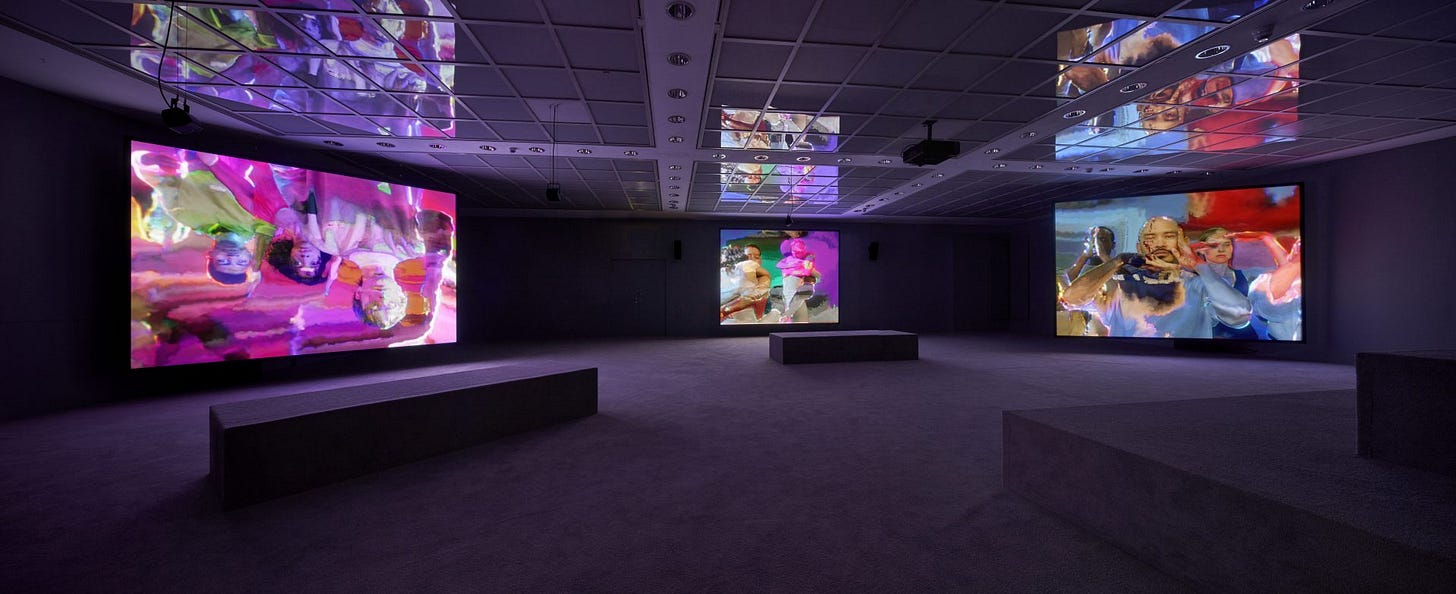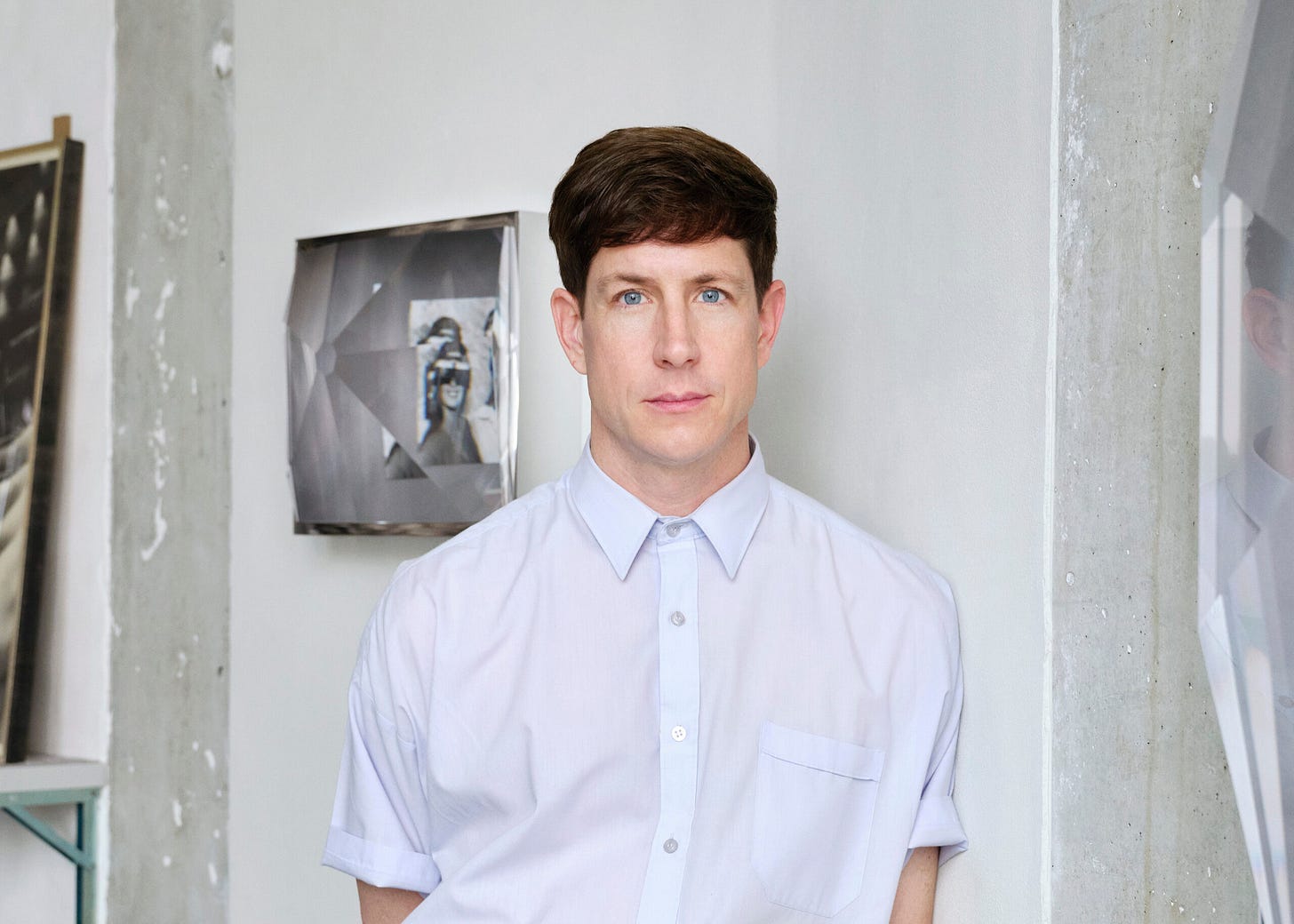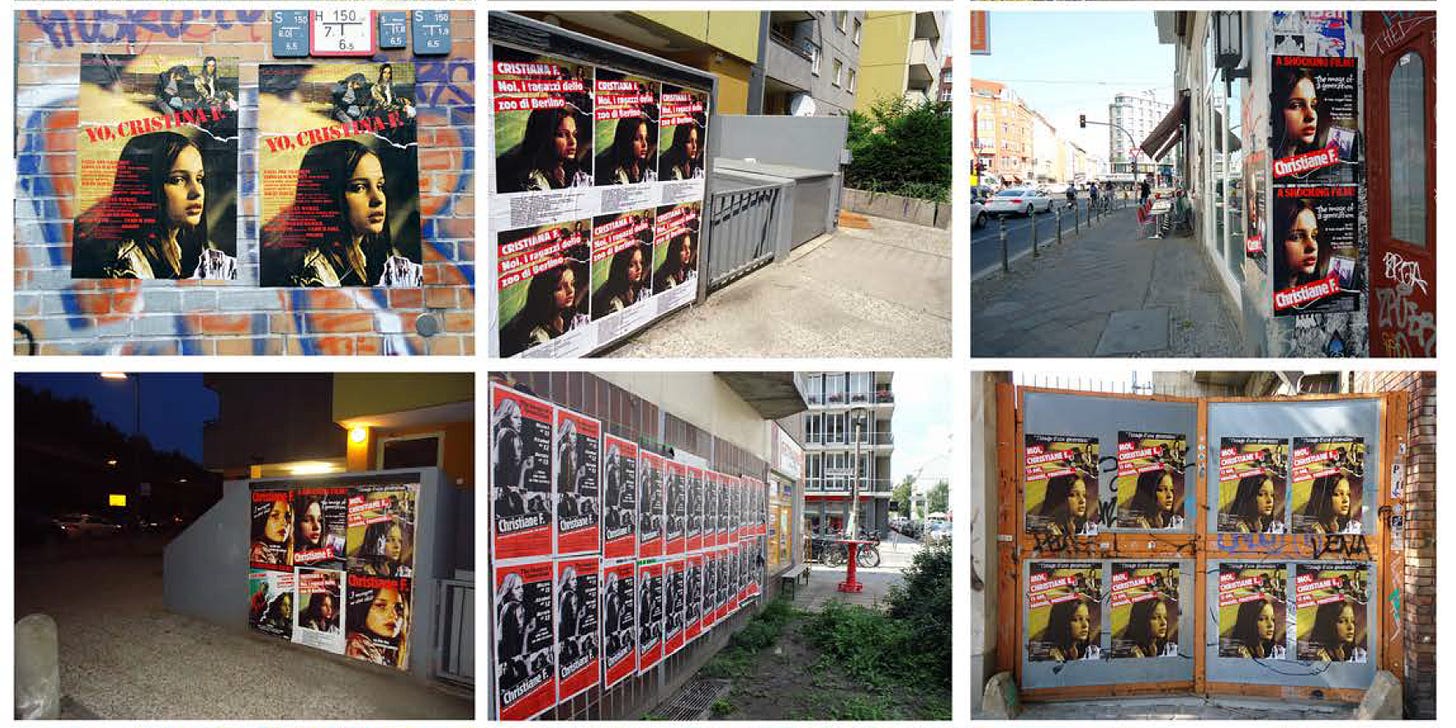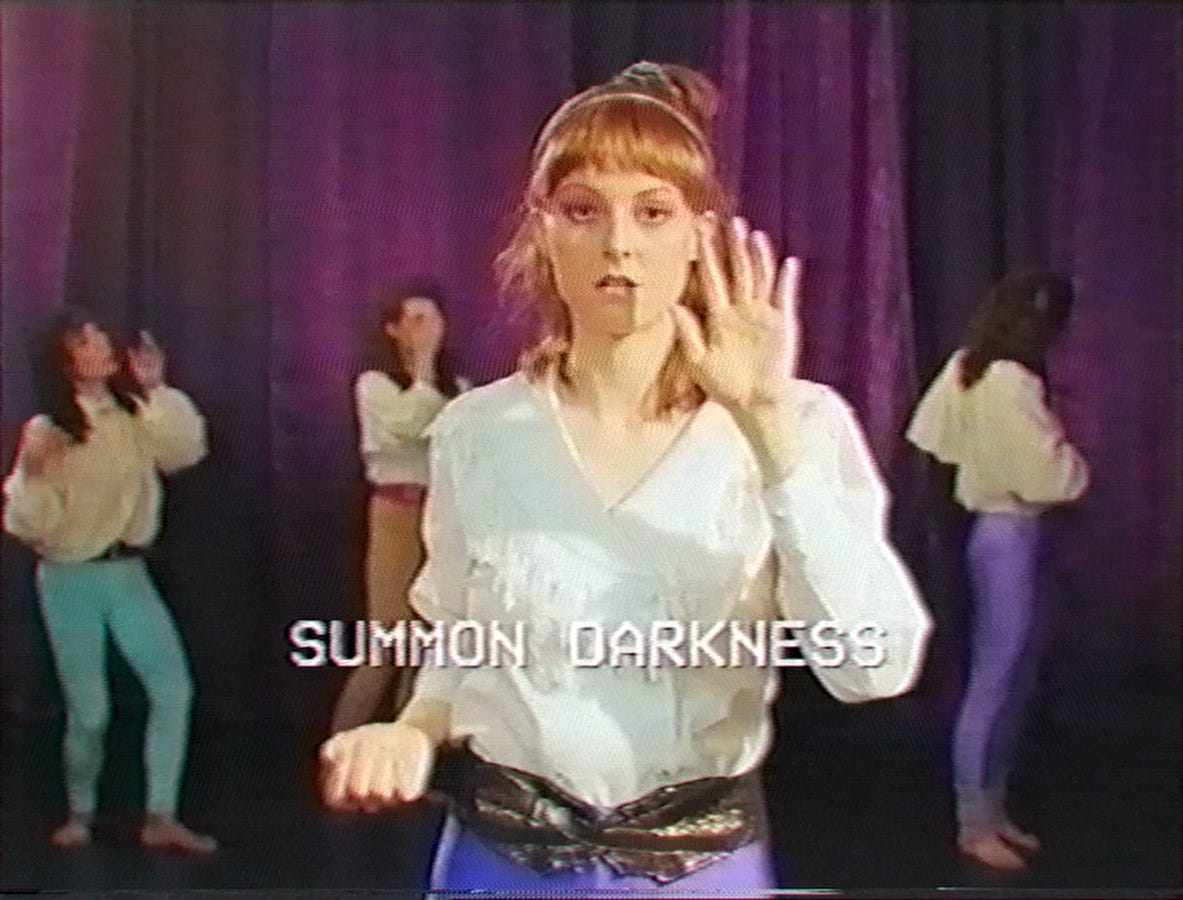Jeremy Shaw: Poster Art Time Warps
With Phase Shifting Index headlining the new collection showcase at Berlin's Hamburger Bahnhof, a short interview extract from 2019 on Shaw's time slip inducing public art
Anyone in Berlin, or visiting soon, should go see Jeremy Shaw’s Phase Shifting Index in the current Museum in Motion exhibition at Hamburger Bahnhof1. By all accounts, and as the pulsating reels and stories interrupting my social feeds attest, the ecstatic rave crescendo will have you convinced in the “capacity to physically manifest a new reality through belief and movement”, as Shaw put it to me.
While the ‘psychedelic conceptualist artist’ was finishing the film in 2019, I conducted a series of interviews with him ahead of it opening at the Pompidou, Paris, in July 2020, for a feature on 032c. You can (should) read that here: What’s the value of time that don’t end? JEREMY SHAW's Phase Shifting Index.
It’s a primer on Shaw’s reality warping, and quite playful, work, with a focus on the Quantification Trilogy of films made between 2014 and 2018 that foreshadow Phase Shifting Index conceptually and formally.
In the short extract from those conversations below, we discuss Shaw’s non-film works, interventions on the streets of Vancouver and Berlin, and the sense of temporal dislocation his works aim to create.
We’re in Shaw’s top floor Berlin apartment in late autumn 2019, a cold mid-morning. A large black porcelain panther sits in one corner, and anti-drugs posters are spread over the walls. Jeremy, wearing a pink mohair jumper, is drinking herbal tea.
Where’s the ‘Don’t Blow with Drugs’ poster from?
It’s just like an 80s drug propaganda poster. I love drug propaganda. See the one behind you there, I love that one.
That’s fantastic. Also because it’s illustrated, it makes you think of war time German propaganda.
It totally does. It looks like total propaganda. That’s Yugoslavian. It’s from 1983 or something I think. It says something like, ‘drugs are suicide,’ basically is what it says. Alexander Demonovitch translated it for me. I have a bunch of these. That’s an anti-war one but I love posters.
Is the poster as a format something that interests you?
Oh, it did, lots. I don’t know if you’ve ever seen these but I did these projects in 2009 to 2010 in Vancouver. The Olympics were coming, but in 1986 we’d had the Expo and of course both were met with crazy political unrest. So during that year, in the lead up to the Olympics, I reprinted 25 different posters for the Expo 86 and we did a full campaign around the town promoting the World Fair, with nothing else [on them]. You’d come across these walls of posters promoting something that was 20 years old. That went over super [well]… people were so tripped out by it, really really confused. I was so proud of it.
And then I did it here [in Berlin] with posters for the film Christiane F. I printed nine different foreign language versions of it. I think there were 5,000 in total, half were done legally and half were given to these graffiti kids, who were putting them in the most amazing spots. You can still find them at Kotbussier Tor, they’ve been there for seven years. This weird, recent past, to me it’s a real sci-fi thing to reintroduce something that is just out of [sync]... and then of course the politics that go with it, what has happened since then.
It’s that strange worm-holing moment, an anachronism, but it makes you question where or when you were….
Exactly, it could be just a couple of second’s slippage but then you’re like, “What the fuck?!?” Those two were really effective in doing something to people. Someone asked me to do one in New York last year, when the Swiss Institute was under construction, [but] I don’t know what I would do these days. Eight years ago, I probably would have reprinted a presidential poster or something, but I just feel a little bit overwhelmed by everything at the moment in that respect. I don’t know how to comment politically at the moment. I don’t know if that makes sense. I didn’t know where to begin, basically, in New York now, and doing something that would have any weight to it or that would be interesting.
It’s very much the same in Britain at the moment where you’ve got all this Brexit stuff. Nobody knows what’s going on and nobody knows actually where the ground is…
It’s very hard for an artist to just make something off the cuff, like “The President Sucks!” You know what I mean? We all know this shit now. It’s a tricky time for that. I use those [posters] as a critique and I don’t know what I’m critiquing at the moment. There’s so many bigger issues around, so I’m happy with making these films where I can use science fiction as a way to flatten everything. It’s a way for me to create a world where I can talk about everything I’m interested in without any hierarchy, no privileging one over the other, and be able to still use dances I’m interested in from another culture via a filter of science fiction. We’re at such a funny time about what you can and can’t do, there are so many restrictions in place.
Time, temporality, and how we experience it, is one of the central themes of the ongoing research around which Infinite Thought orbits. You could consider Shaw’s time-slips as a precursor to future posts in the works.
Visit Phase Shifting Index at Museum in Motion: A Collection for the 21st Century at Hamburger Bahnhof, Nationalgalerie der Gegenwart.
For more information visit:
Jeremyshaw.net
Bradley Ertaskiran (gallery)
The large-scale, multi-screen film installation has been acquired for the permanent collection.








